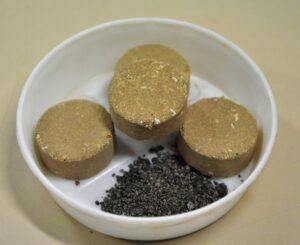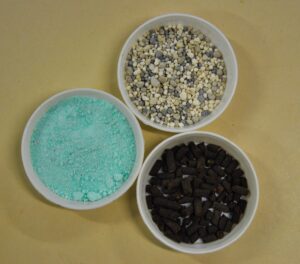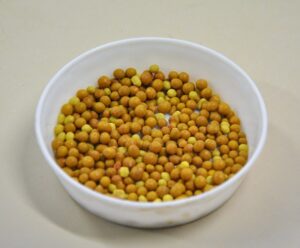Navigating the world of soil fertility
By Dan Austin
Fertile soil is key to healthy plants but how do you navigate the world of soil ameliorants when there are so many products out there?
Whether taking the form of a mineral mix, foliar feed, humic acid, mycorrhizae, slow release prills, fish emulsion or seaweed extract, it can be overwhelming navigating the world of soil fertility when all you want to do is produce healthy plants.
While often appearing on the same shelf, fertilisers and soil ameliorants perform many different functions. Some are combined in the one product, while others serve a specific purpose, and expecting a result without understanding the product, is likely to lead to disappointment. Fertilisers improve the supply of nutrients in the soil, directly affecting plant growth, while soil ameliorants improve a soil’s physical and biological condition.

The first thing any horticulturist needs to do when considering products to improve soil health and plant growth is to clearly define the situation in which the products will be used. In container growing, soil is generally absent, replaced by a medium of various ingredients. In this scenario, there is likely to be very little nutrient naturally occurring in the substrate, so boosting fertility using mineral trace elements and controlled release chemical fertilisers is standard practice. In addition, an appropriate pH in the medium must be achieved to ensure the nutrients within the mix are fully available to plants. It is an artificial growing environment, generally high in organic matter, so other forms of soil ameliorants are less often required.
Moving to scenarios involving soil-grown plants, things start to get a little more complicated. The condition of a soil can affect plant growth in a myriad of ways. Some soils are perfectly fertile physically, chemically and biologically but present a pH unsuitable to the plants being grown. This will negatively affect a plants ability to extract nutrients from the soil. In this case, the pH can be adjusted to suit the plant. The pH of a soil can be raised with lime and lowered with sulphur, but this is time-consuming and limited, so more often, a better solution is to grow plant species more appropriate to the pH range.
Other soils may have been drained of nutrients and in this case, fertilisers can be of assistance. Soil ameliorants aside, fertilisers also come in a confusing range of shapes and forms. Chemical fertilisers are often water soluble and immediately available to plants for a quick boost in nutrition. Whether applied to the leaves or roots of plants, they are certainly a great tool in the horticulturist’s arsenal. However, it is important to follow the instructions and application rates, as they can be easily over-applied, causing fertiliser burn and increased pest susceptibility in plants. Piercing and sucking insects, particularly aphids, love plants that have been subjected to excess nitrogen.

Mineral fertilisers appear in a less refined form, requiring weathering to become fully accessible and are slower to become available to plants. These are great for annual and seasonal applications. Organic fertilisers are also slower to breakdown and offer slow-release nutrients to plants, with many providing the added benefit of doubling as soil ameliorants, improving biology and structure.
Sometimes soil negatively affects plant growth due to poor health and an absence of microbiota. This has often resulted from poor farming practices in the past, and soils in this situation are at an increased risk of soil-borne diseases like Phytophthora, and pests like nematodes that thrive in the absence of organic matter. In this case, organic matter is the solution. Composts, seaweed extracts, fish emulsions and mulches can all play a part in restoring soil biology.
Biodiversity in soil aids plant growth in many ways. Soil fungi in the form of mycorrhizae form a symbiotic relationship with plants, trading nutrients and water for sugars produced by photosynthesis. Generic species of mycorrhiza can be purchased to inoculate soils, though many plants have relationships with specific species of fungus. Organic matter and microbial activity also result in the substance ‘humus’ which is important in nutrient holding and release to plants, and building soil structure. When restoring a depleted soil by adding organic matter, humates like fulvic acid and humic acid can also be added to provide instant humus, while the natural substance accumulates as a product of the breakdown of any organic matter being added. Soil ameliorants also improve soil structure and can improve aeration and drainage, so their benefits are many but rarely do they contribute to nutrition.
More and more products, that combine several ameliorants and even fertilisers in the one product, are coming onto the market. Others serve one purpose and serve it well, but you need to understand what it is that the product is providing and match to a scenario where it is required.
Do that and (within reason) even the poorest of soils can become a thriving oasis.

